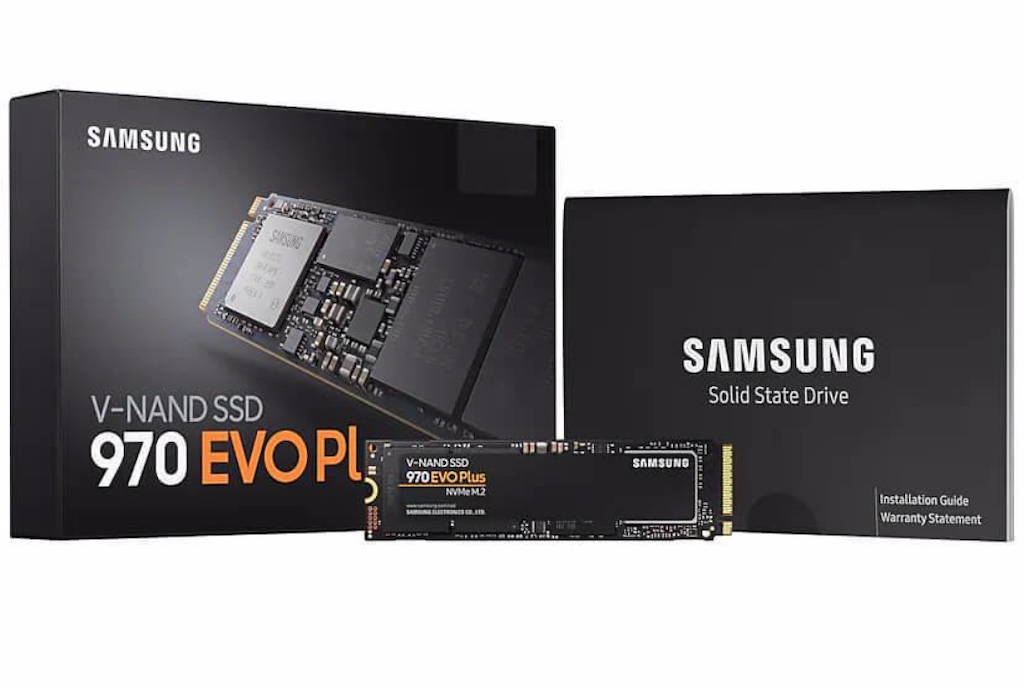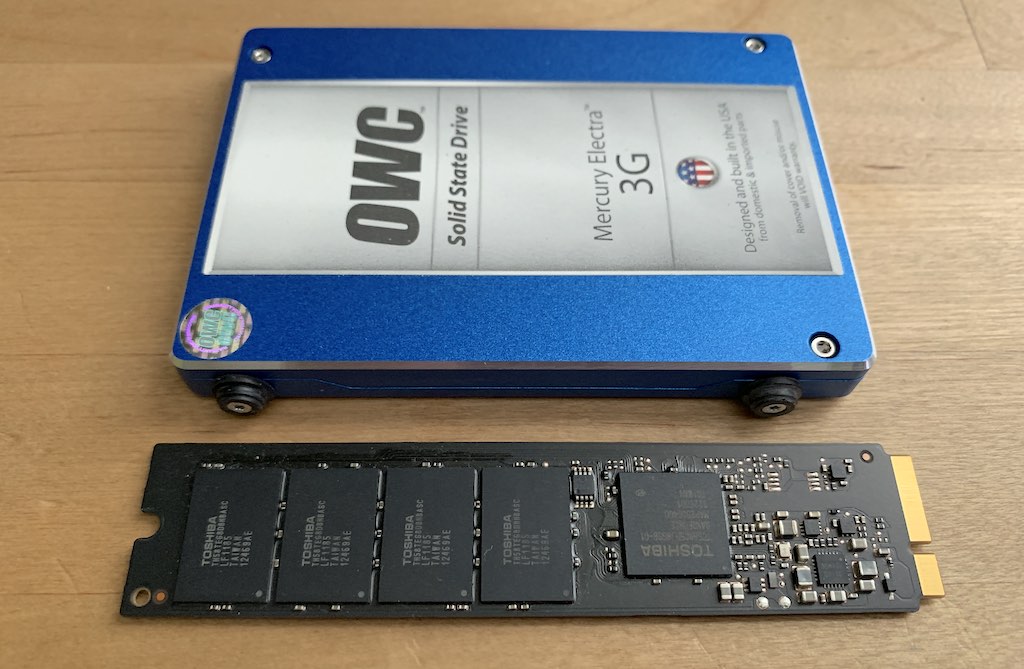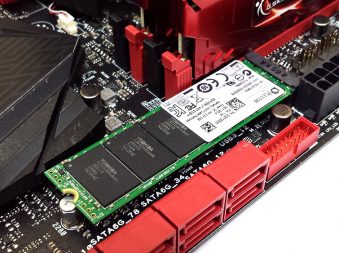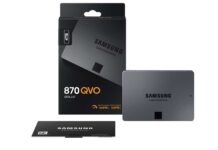
One of the most revolutionary advances in the personal computer industry over the past decade—especially in laptops—has been the transition from hard disk drives to solid state storage, or SSDs. It’s hard to overstate just how big a deal this has been. Thanks to solid state storage, the boot time for a computer has been reduced from a minute to just a few seconds.
Copying, loading, and saving files is dramatically faster. All operations are snappier when the computer’s OS is installed on an SSD. And with solid state storage (which has no moving parts) came other advantages including silent operation, cooler temperatures, lower power demand, and greater reliability. SSD technology hasn’t stopped developing since its introduction, and that’s why I’m talking about one of the more useful (but potentially confusing) developments: M.2 storage.
The incredible shrinking SSD
Before getting to M.2 storage specifically, it’s worth looking at just how far SSDs have come in the past decade or so.
Go back to 2009, and SSDs were just starting to enter the mainstream, but they were very expensive and low capacity. At that time a 100GB SSD was about the average capacity being sold—that was the balance between being useful (enough space for an operating system and some critical applications) and affordable. Apple actually helped to kick off their adoption, by making SSD storage standard in the 2010 MacBook Air.
At this point, SSDs looked like traditional hard drives. Manufacturers mounted the memory chips and circuitry in a case that matched the physical form factor of a hard drive. Because SSDs were most popular in laptops, that meant most SSDs looked like a 2.5-inch hard drive.
Then a light bulb went off. With space at such a premium—especially in laptops, where “thinner and lighter” is the mantra—why continue to take up all that physical space with storage when at its heart an SSD is just a bunch of memory chips and controllers on a circuit board? That led to the development of card form factor SSDs which took up a fraction of the physical space. These “mini-SATA” drives which became known as mSATA ditched the cabling and used an edge connector to plug into a laptop or PC motherboard directly, with that slot also supplying power to the drive.
M.2 storage the next generation form factor
The industry was hard at work at what was called “Next-Generation Form Factor” or NGFF solid state drives. When that form factor was standardized in 2013, it adopted the M.2 designation. This is solid state storage stripped down to the essentials. It looks like a stick of gum with chips glued to it, or even a DRAM memory module. The M.2 stick connects to an M.2 port on the motherboard (no cables required), and is secured in place by a screw.

In the photo above are a pair of solid state drives circa 2011. The “traditional” 2.5-inch version is a 120GB SATA II SSD. The stick is a 128GB drive used by Apple that closely resembles the M.2 form factor, although it actually used an mSATA III connector. But you get the picture. You can see how much space is saved for comparable capacity drives (assuming the laptop manufacturer designed based on the stick form factor), and there is also a significant savings in weight. Naturally, ditching the case and going with a bare bones form factor helped manufacturers to bring solid state storage cost down as well.
The new M.2 storage standard wasn’t just about saving space. The standard supports memory chips on both sides, increasing the maximum capacity. And M.2 also supported the option of faster connections for greater speed (more on that later).
And just to make things interesting, the M.2 standard isn’t just for storage … M.2 modules can also be Bluetooth cards, Wi-Fi cards and other functions. In this article, I’m focused on M.2 SSD storage, but just be aware that you can’t simply assume an M.2 stick is an SSD.
M.2 versus NVMe: what’s the difference?
This is actually a bit of a trick question, but there can be a lot of confusion around the issue. Non-Volatile Memory Express, NVMe, is a standard for storage that allows for maximum speed by direct communication with a PC’s PCIe bus, while M.2 is a card form factor. NVMe and M.2 aren’t in competition and they are not interchangeable; in fact, the fastest M.2 SSDs are M.2 NVMe SSDs.
What you need to know about M.2 compatibility
M.2 drives come in multiple physical sizes. They can be widths of 12, 16, 22, and 30 millimetres and lengths of 16, 26, 30, 38, 42, 60, 80 or 110 millimetres. Most M.2 modules are 12 mm in width, but the length can vary. A longer form factor means more space for memory modules, so longer M.2 drives can either be higher capacity—or they could be using many inexpensive low capacity modules to make a “standard” capacity drive more affordable.
Then there are the variations in interface.

Some M.2 drives support the legacy SATA III interface. If your PC has an M.2 slot that’s limited to SATA III support, you can still enjoy the higher storage capacity that many M.2 drives offer, but data transfer speed will be limited by SATA III’s 6.0 Gbit/s maximum throughput. Some M.2 drives support PCI Express, which gives them a bit of a speed boost compared to SATA. But the real speed gains came with the latest connectivity standard, PCI Express Gen 4.0 combined with Non-Volatile Memory Express technology. These NVMe M.2 drives use parallel processing and low latency for a maximum theoretical data throughput of 32 Gbit/s.
It’s important to match the M.2 drive interface to the M.2 support on your computer. In particular, some PCs with motherboards manufactured in the early days of NVMe M.2 drives can access the storage, but can’t boot from an NVMe M.2 drive.
Can my computer be upgraded to M.2 storage?
Many recent laptops and desktop PCs can be upgraded to M.2 storage, but you need to be certain of three things:
- Your computer’s motherboard must have an M.2 slot (some have several!)
- The interface (is it SATA, PCI Express, or NVMe?)
- The length and width of M.2 sticks supported
If you’re not sure, bring your computer by your local Geek Squad desk and they’ll be able to help you out.
PlayStation 5 storage
It’s worth noting that next-gen M.2 NVMe SSDs are used as storage for the PlayStation 5 game console. You can’t just use any old PC version in this case, though. Because of the demands of gaming, Sony has strict requirements for speed and also required the M.2 drive to have a heat sink. You can get all the details including M.2 SSD requirements and suggestions in this post from gaming editor, Jon Scarr.
M.2 is the latest form factor standard for SSD storage, and there is no doubt that it will continue to evolve and advance as technology and storage needs do. It can be used both as an internal storage drive within your PC or gaming console or a portable drive. The lightweight design, large capacity, simple installation, and quick speeds make it a popular choice for anyone looking to upgrade their PC storage.





